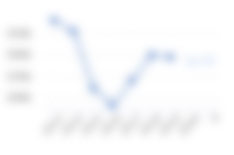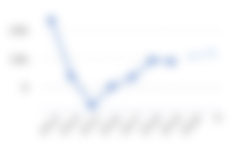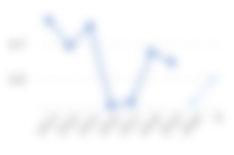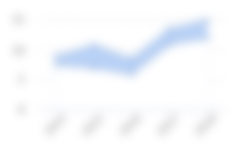111710 — Namhwa Industrial Co Share Price
- KR₩99bn
- KR₩53bn
- KR₩21bn
- 78
- 77
- 18
- 63
Growth & Value
| 12m Forecast Rolling | Industry | Market | |
|---|---|---|---|
| PE Ratio (f) | n/a | ||
| PEG Ratio (f) | n/a | ||
| EPS Growth (f) | n/a | ||
| Dividend Yield (f) | n/a | ||
| Valuation (ttm) | Industry | Market | |
|---|---|---|---|
| Price to Book Value | 0.54 | ||
| Price to Tang. Book | 0.54 | ||
| Price to Free Cashflow | 11.11 | ||
| Price to Sales | 4.97 | ||
| EV to EBITDA | 6.32 | ||
Shareholder Activity
| Type | Buy / Hold / Sell |
|---|---|
| Institutions | |
| Directors | |
| Community |
Guru Screens
Quality
| Name | Industry | Market | |
|---|---|---|---|
| Return on Capital | 3.75% | ||
| Return on Equity | 5.28% | ||
| Operating Margin | 36.65% | ||
Financial Summary
| Year End 31st Dec | Unit | 2020 | 2021 | 2022 | 2023 | 2024 | 2025E | 2026E | CAGR / Avg |
|---|---|---|---|---|---|---|---|---|---|
| Total Revenue | KR₩m | 17,713.93 | 25,893.22 | 30,435.8 | 24,670.58 | 20,703.1 | n/a | n/a | 6.65% |
| Operating Profit | m | ||||||||
| Net Profit | m | ||||||||
| EPS Reported | |||||||||
| Diluted Normalised EPS | |||||||||
| EPS Growth | % | +115.64 | +108.29 | +50.03 | -14.66 | -38 | n/a | n/a | n/a |
| PE Ratio | x | ||||||||
| PEG | |||||||||
| Profitability | |||||||||
| Operating Margin | % | ||||||||
| ROA | % | ||||||||
| ROCE | % | ||||||||
| ROE | % | ||||||||
| Cashflow | |||||||||
| Op. Cashflow ps | |||||||||
| Capex ps | |||||||||
| Free Cashflow ps | |||||||||
| Dividends | |||||||||
| Dividend ps | |||||||||
| Dividend Growth | % | ||||||||
| Dividend Yield | % | ||||||||
| Dividend Cover | x | ||||||||
| Balance Sheet | |||||||||
| Cash etc | m | ||||||||
| Working Capital | m | ||||||||
| NFA | m | ||||||||
| Net Debt | m | ||||||||
| Book Value | m | ||||||||
| Diluted Weighted Average Shares | m | ||||||||
| Book Value ps | |||||||||
Other Ratios
| Leverage (ttm) | Total | - Intang | + Pension |
|---|---|---|---|
| Gross Gearing | |||
| Net Gearing | |||
| Cash / Assets |
| Liquidity (ttm) | |
|---|---|
| Curr. Ratio | |
| Quick Ratio | |
| Interest Cov. | |
| Efficiency (ttm) | |
|---|---|
| Asset Turnover | |
| Recs Turnover | |
| Stock Turnover | |
Recent History
| Latest interim period vs. prior period | Industry | Market | |
|---|---|---|---|
| Sales Growth | |||
| EPS Growth | |||
| 3yr Compound Annual Growth Rate | Industry | Market | |
|---|---|---|---|
| Sales CAGR | |||
| EPS CAGR | |||
| DPS CAGR | |||
Profile Summary
Namhwa Industrial Co.,Ltd. is a Korea-based company mainly engaged in the operation of golf courses. In addition, the Company is engaged in the provision of food and beverage, cart rental, and lodging services.
Directors
- Last Annual
- December 31st, 2024
- Last Interim
- March 31st, 2025
- Incorporated
- February 23rd, 1990
- Public Since
- November 29th, 2018
- No. of Shareholders
- 4,896
- No. of Employees
- 75
- Sector
- Hotels & Entertainment Services
- Industry
- Consumer Cyclicals
- Exchange
Korea Exchange - KOSDAQ
- Shares in Issue
- 20,588,000

- Address
- Muan Country Club, Muan, 58540
- Web
- http://www.muangc.co.kr/
- Phone
- +82 614509000
- Auditors
- Sunil accounting firm
Upcoming Events for 111710
Similar to 111710
Ananti
Korea Exchange - KOSDAQ
Modetour Network
Korea Exchange - KOSDAQ
Sejoong Co
Korea Exchange - KOSDAQ
Seobu T&D Co
Korea Exchange - KOSDAQ
Sunshine Food
Korea Exchange - KOSDAQ
FAQ
As of Today at 22:11 UTC, shares in Namhwa Industrial Co are trading at KR₩4,785. This share price information is delayed by 15 minutes.
Shares in Namhwa Industrial Co last closed at KR₩4,785 and the price had moved by -4.4% over the past 365 days. In terms of relative price strength the Namhwa Industrial Co share price has underperformed the FTSE Developed Asia Pacific Index by -9.69% over the past year.
There is no consensus recommendation for this security.
Find out moreThe Namhwa Industrial Co dividend yield is 4.18% based on the trailing twelve month period.
Last year, Namhwa Industrial Co paid a total dividend of KR₩200, and it currently has a trailing dividend yield of 4.18%. We do not have any data on when Namhwa Industrial Co is to next pay dividends.
We do not have data on when Namhwa Industrial Co is to next pay dividends. The historic dividend yield on Namhwa Industrial Co shares is currently 4.18%.
To buy shares in Namhwa Industrial Co you'll need a share-dealing account with an online or offline stock broker. Once you have opened your account and transferred funds into it, you'll be able to search and select shares to buy and sell. You can use Stockopedia’s share research software to help you find the the kinds of shares that suit your investment strategy and objectives.
As of the previous close price of KR₩4,785, shares in Namhwa Industrial Co had a market capitalisation of KR₩99bn.
Here are the trading details for Namhwa Industrial Co:
- Country of listing: Korea, Republic of
- Exchange: KOE
- Ticker Symbol: 111710
Based on an overall assessment of its quality, value and momentum Namhwa Industrial Co is currently classified as a Contrarian. The classification is based on a composite score that examines a wide range of fundamental and technical measures. Stock are classified on the the following spectrum: Super Stocks, High Flyers, Contrarians, Turnarounds, Neutral, Value Traps, Momentum Traps, Falling Stars, and Sucker Stocks. For more information, learn about our StockRank Styles.
We could not find analyst target price data for this security.
Find out moreAn important predictor of whether a stock price will go up is its track record of momentum. Price trends tend to persist, so it's worth looking at them when it comes to a share like Namhwa Industrial Co. Over the past six months, its share price has underperformed the FTSE Developed Asia Pacific Index by -24.68%.
As of the last closing price of KR₩4,785, shares in Namhwa Industrial Co were trading -6.45% below their 200 day moving average. You can read more about the power of momentum in assessing share price movements on Stockopedia.
The Namhwa Industrial Co PE ratio based on its reported earnings over the past 12 months is null. The shares last closed at KR₩4,785.
The PE ratio (or price-to-earnings ratio) is the one of the most popular valuation measures used by stock market investors. It is calculated by dividing a company's price per share by its earnings per share.
The PE ratio can be seen as being expressed in years, in the sense that it shows the number of years of earnings which would be required to pay back the purchase price, ignoring inflation. So in general terms, the higher the PE, the more expensive the stock is.
We do not have data on Namhwa Industrial Co's directors





